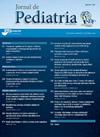Estimation of standing height in spina bifida: model development and validation
IF 2.8
4区 医学
Q1 PEDIATRICS
引用次数: 0
Abstract
Objective
Childhood standing height has been estimated from arm span-related (heightAS) models. The authors aimed to develop and cross-validate a heightAS model in individuals with spina bifida (SB) and examine the accuracy of existing heightAS models.
Methods
Participants were individuals with sacral and low-lumbar SB (n = 14) and non-SB (n = 83), 7–16 years old. Arm span, age, sex, and group (SB vs. non-SB) were candidate height predictors. Sequential regression and leave-one-out cross-validation approaches were used for the model development (M1) and cross-validation (M1–M5). Existing models were: an SB-specific model from Polfuss et al. (M2) and non-SB specific models from Gauld et al. (M3), Mulu et al. (M4), and Zverev et al. (M5) studies.
Results
Arm span and group explained 95 % of the variance in height (R2 = 0.95; p < 0.001; SEE = 3.666 cm) and were included in the M1. Mean differences between actual and estimated height were 0.0 cm (M1), 0.4 cm (M2), and 0.5 cm (M5), all not significant (p > 0.05). However, Bland-Altman analysis revealed some variability in the predictability of the models across participants with limits of agreement ranging from 7.4 to 10.9 cm. Considerable errors were observed with M3 (mean diff: −5.58 cm, 95 % CI: −1.6, −20.2 cm), and M4 (mean diff: 10.5 cm, 95 % CI: −13.8, −27.3 cm).
Conclusions
Models (M1, M2 and M5) may accurately estimate standing height in groups of children with SB. However, due to the wide limits of agreement, caution is recommended when applying these models for individual height estimations.
脊柱裂患者站立高度的估算:模型开发与验证。
目的:儿童期的站立身高是通过臂展相关(heightAS)模型估算的。作者旨在开发并交叉验证脊柱裂(SB)患者的身高AS模型,并检查现有身高AS模型的准确性:参与者为 7-16 岁的骶椎和低腰椎脊柱裂患者(14 人)和非脊柱裂患者(83 人)。臂展、年龄、性别和组别(骶骨骨折与非骶骨骨折)是预测身高的候选因素。在模型开发(M1)和交叉验证(M1-M5)中采用了顺序回归和留一交叉验证方法。现有模型包括:Polfuss 等人的 SB 特定模型(M2)以及 Gauld 等人(M3)、Mulu 等人(M4)和 Zverev 等人(M5)的非 SB 特定模型:臂展和组别解释了 95% 的身高变异(R2 = 0.95; p 0.05)。然而,布兰德-阿尔特曼分析表明,不同参与者的模型预测能力存在一定差异,差异范围从 7.4 厘米到 10.9 厘米不等。M3(平均差异:-5.58 厘米,95 % CI:-1.6,-20.2 厘米)和 M4(平均差异:10.5 厘米,95 % CI:-13.8,-27.3 厘米)的误差较大:结论:模型(M1、M2 和 M5)可以准确估计 SB 儿童群体的站立身高。结论:模型(M1、M2 和 M5)可准确估计 SB 儿童群体的站立身高,但由于一致性限制较大,建议在应用这些模型估计个体身高时谨慎行事。
本文章由计算机程序翻译,如有差异,请以英文原文为准。
求助全文
约1分钟内获得全文
求助全文
来源期刊

Jornal de pediatria
医学-小儿科
CiteScore
5.60
自引率
3.00%
发文量
93
审稿时长
43 days
期刊介绍:
Jornal de Pediatria is a bimonthly publication of the Brazilian Society of Pediatrics (Sociedade Brasileira de Pediatria, SBP). It has been published without interruption since 1934. Jornal de Pediatria publishes original articles and review articles covering various areas in the field of pediatrics. By publishing relevant scientific contributions, Jornal de Pediatria aims at improving the standards of pediatrics and of the healthcare provided for children and adolescents in general, as well to foster debate about health.
 求助内容:
求助内容: 应助结果提醒方式:
应助结果提醒方式:


